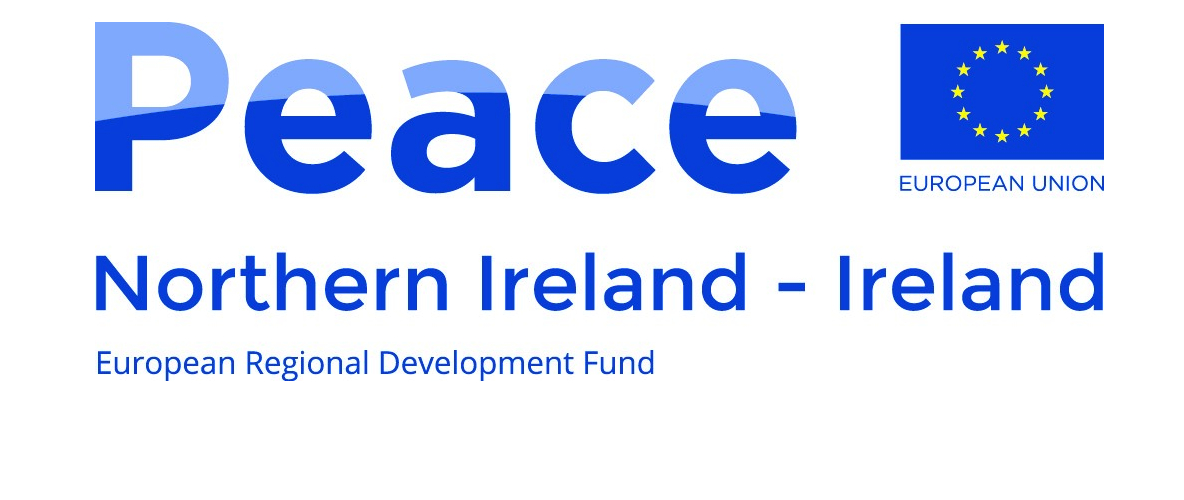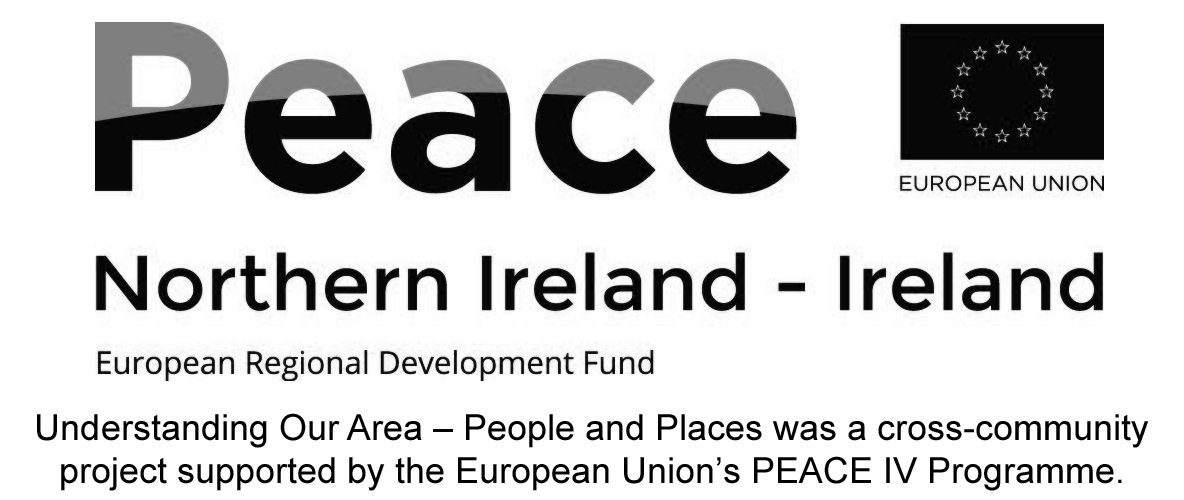It set out to increase the understanding and expression of our culture and history, our people and places, through museum collections, historic sites and cultural heritage using interpretation, arts and multimedia to create a peace building legacy. The initiative is part of Causeway Coast and Glens Borough Council’s PEACE IV Local Area Action Plan, funded by the European Union’s PEACE IV Programme, managed by the Special EU Programmes Body, which is providing £3.8 million for community projects across the borough.
Between 2017 and 2020, Causeway Coast and Glens Borough Council Museum Services supported a range of community-led projects, along with a range of events, showcases and resources exploring the history of the Causeway area. Brief descriptions of each project are provided below, together with links to the web posts, archives and resources produced by each group as part of the Understanding Our Area programme.
For more information please contact us:
Email: cms@causewaycoastandglens.gov.uk
Tel: (028) 2766 0230
Accessible Heritage
Glenshane Care Association
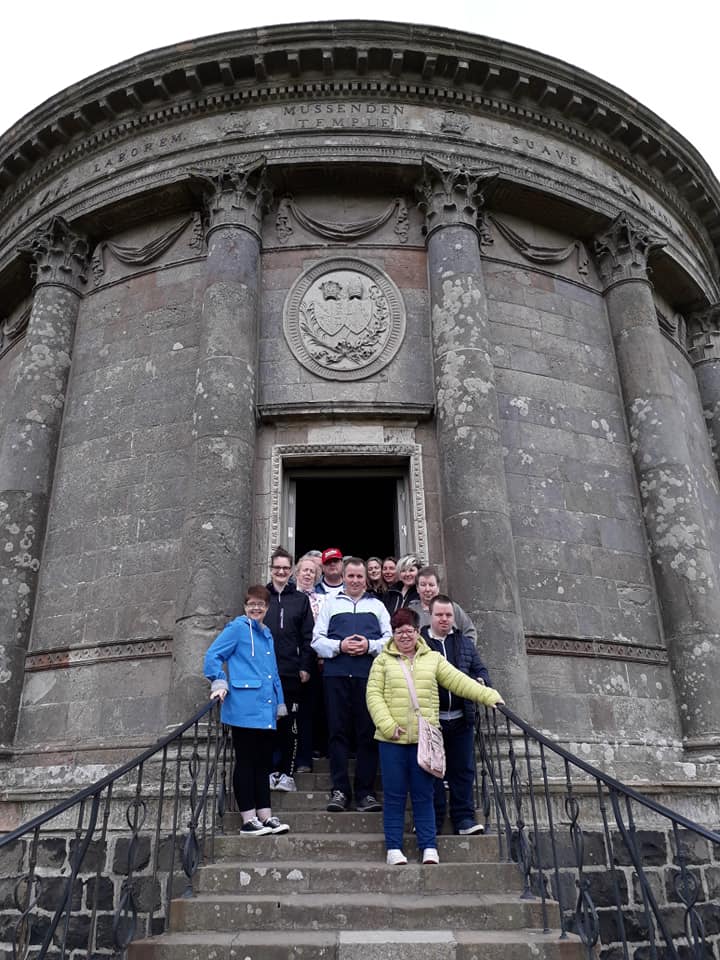
Glenshane Care Association.
Glenshane Care Association, based in Dungiven, are a cross-community group of adults with physical and/or learning disabilities. Their Accessible Heritage project enabled them to learn about local heritage and history while gathering information relating to the accessibility of the sites they visited.
Participants were keen to have a pre-visit talk about the history of the site and, where possible, this was delivered by other groups taking part in the Understanding Our Area programme: representatives from Hervey Heritage Group, Mountsandel Discovery and Heritage Group, Carey Historical Society, Kilrea Development Committee, Portrush Heritage Group and Dromboughil Community Association all shared their specialised knowledge with the group. In turn, Glenshane Care Association were able to share their own experiences with Museum Services.
Bringing together their own finds and those of the Accessible Heritage – RNIB project, Glenshane Care Association produced an accessibility report for the managers of heritage sites outlining their own experiences and suggestions of how accessibility might be improved. They also contributed to the Accessible Heritage Guide produced by in partnership with the Accessible Heritage – RNIB project.
Hardcopies of the Accessible Heritage Guide are free and can be picked up from Visitor Information Centres across the Borough, or by contacting Causeway Coast and Glens Borough Council Museum Services through this website.
A digital copy of the Accessible Heritage Guide may be downloaded here. The content in audio format can also be accessed here
To follow the progress of the Glenshane Care Association’s project, click here
Accessible Heritage
RNIB
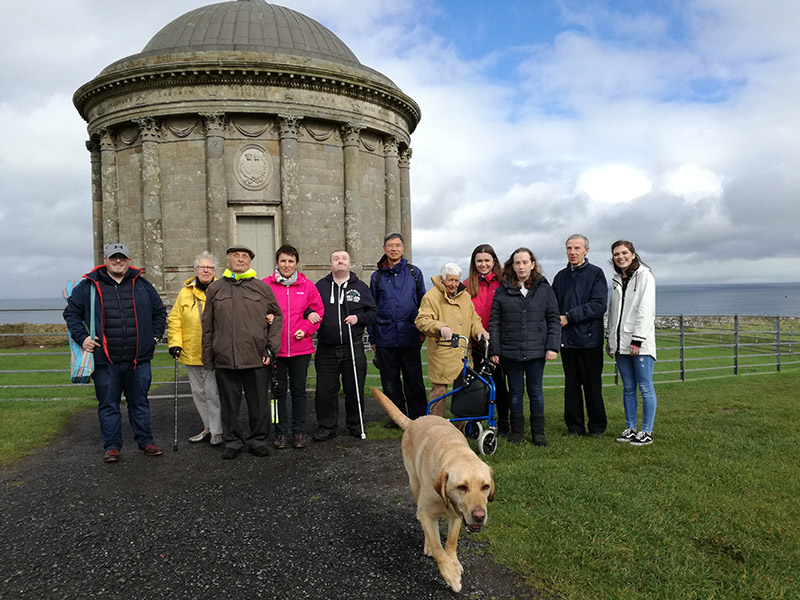
RNIB participants.
This aspect of the Accessible Heritage project was a regional programme led by Museum Services in partnership with RNIB. It was designed to allow people with sight loss to gain hands-on access to different aspects of the borough’s past, and highlight how they experience history in these places. After visiting more than 20 heritage sites across the borough, the RNIB group worked in partnership with Glenshane Care Association to produce an heritage guide which is aimed at increasing accessibility to the heritage of the Causeway Coast and Glens and allowing people with additional needs and young families to make informed decisions about their visits. The RNIB participants also contributed to the accessibility report produced by Glenshane Care Association.
Hardcopies of the Accessible Heritage Guide are free and can be picked up from Visitor Information Centres across the Borough, or by contacting Causeway Coast and Glens Borough Council Museum Services through this website.
A digital copy of the Accessible Heritage Guide may be downloaded here. The content in audio format can also be accessed here
To follow the progress of the Accessible Heritage - RNIB project, click here
Antrim Gardens Discovery Project
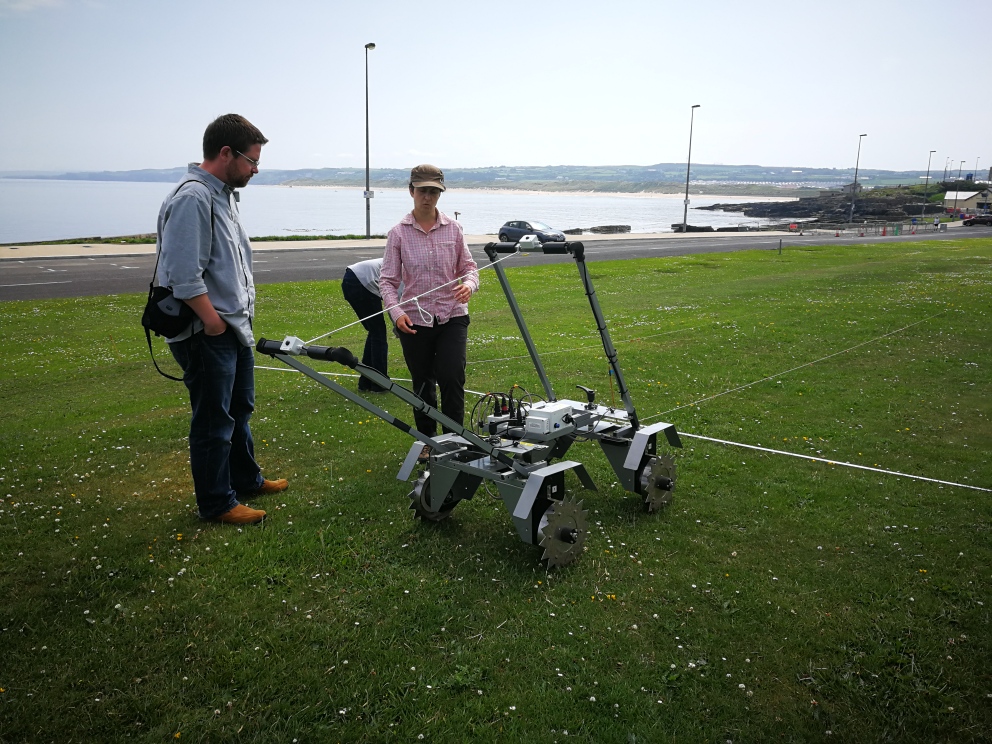
A geophysical survey of Antrim Gardens.
The Portrush Heritage Group commissioned the Centre for Archaeological Fieldwork at Queen’s University to conduct a geophysical survey of Antrim Gardens, Portrush. The results have been used to build on the findings of the 2005 excavation to show the shared heritage of the site, its contribution in the history of Portrush and links to the wider area. Four interpretative panels were produced to use at a range of community events and a handling box was developed to assist with interpretation of the history of the site. Four local primary schools were given young archaeologist packs.
A digital copy of the Antrim Gardens Discovery Project panels may be downloaded here
To follow the progress of Portrush Heritage Group’s project, click here
Ballintoy and Dunseverick Memories
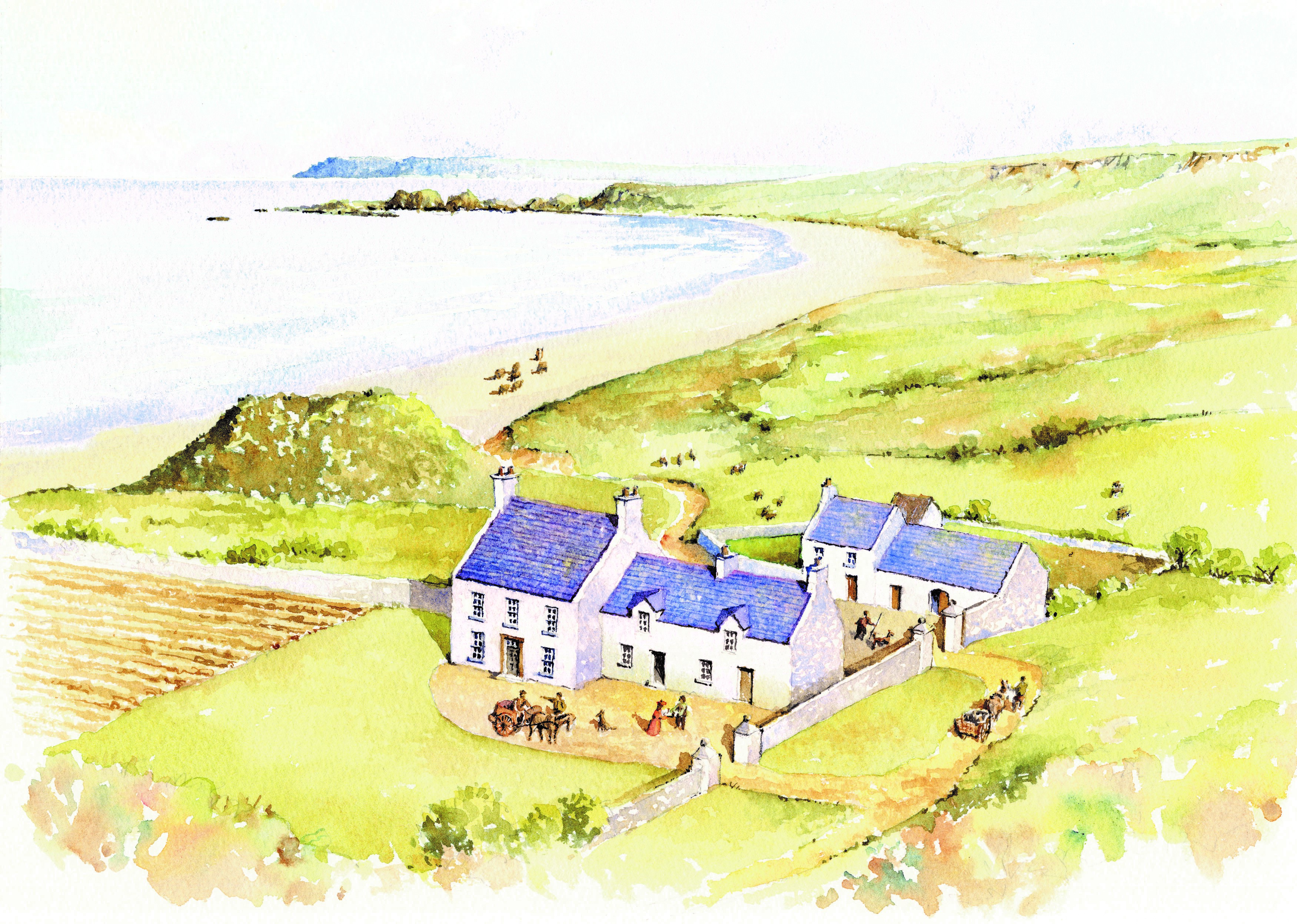
Ballintoy and Dunseverick Memories.
By training up their volunteers, Ballintoy Archaeological and Historical Society created an oral history archive of local people telling their stories about everyday life in the Ballintoy and Duseverick area. The group received oral history training and conducted a range of oral history interviews which were transcribed producing a valuable resource for the future.
Hardcopies of the Ballintoy and Dunseverick Memories booklet and DVD are free and can be picked up from Ballintoy Archaeological and Historical Society, Ballymoney Museum, or by contacting Causeway Coast and Glens Borough Council Museum Services through this website.
Digital copies of the book and DVD may be downloaded here
To follow the progress of the Ballintoy and Dunseverick Memories project, click here
Discovering Ballylough
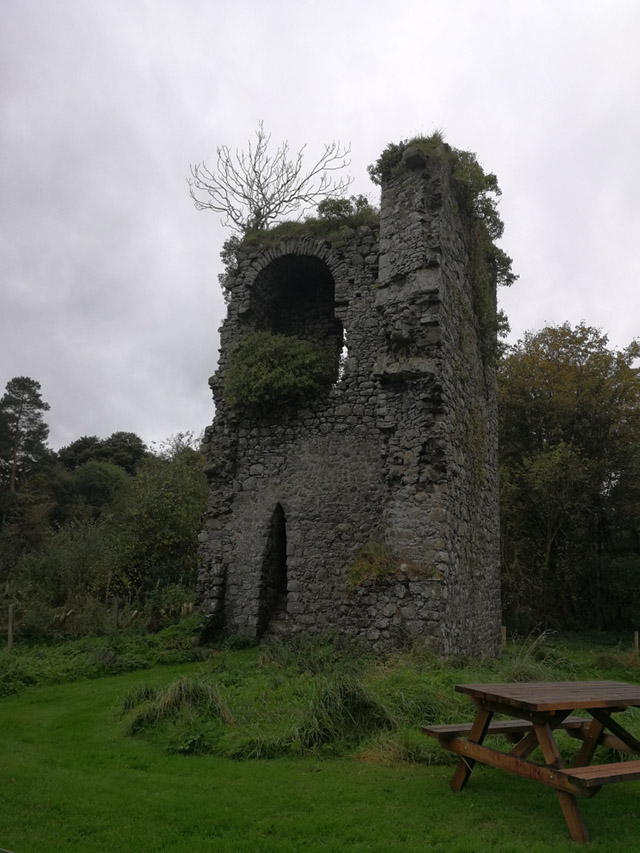
Discovering Ballylough.
Ballylough Living History Trust co-ordinated a training programme exploring aspects of local history, archaeology and built heritage. It covered various elements from genealogy and archiving practices, to archaeology, living history, and arts based interpretation, in order to build capacity within the local community. They explored the genetic ancestry of the area through DNA testing. They produced a book detailing their journey through the project with a set of panels drawn from the book to be installed on site.
Hardcopies of the Discovering Ballylough booklet are free and can be picked up from Ballymoney Museum, or by contacting Causeway Coast and Glens Borough Council Museum Services through this website.
Digital copies of the booklet and panels may be downloaded here
To follow the progress of the Ballylough Living History Trust (Discovering Ballylough) project, click here
Discovering Mountsandel
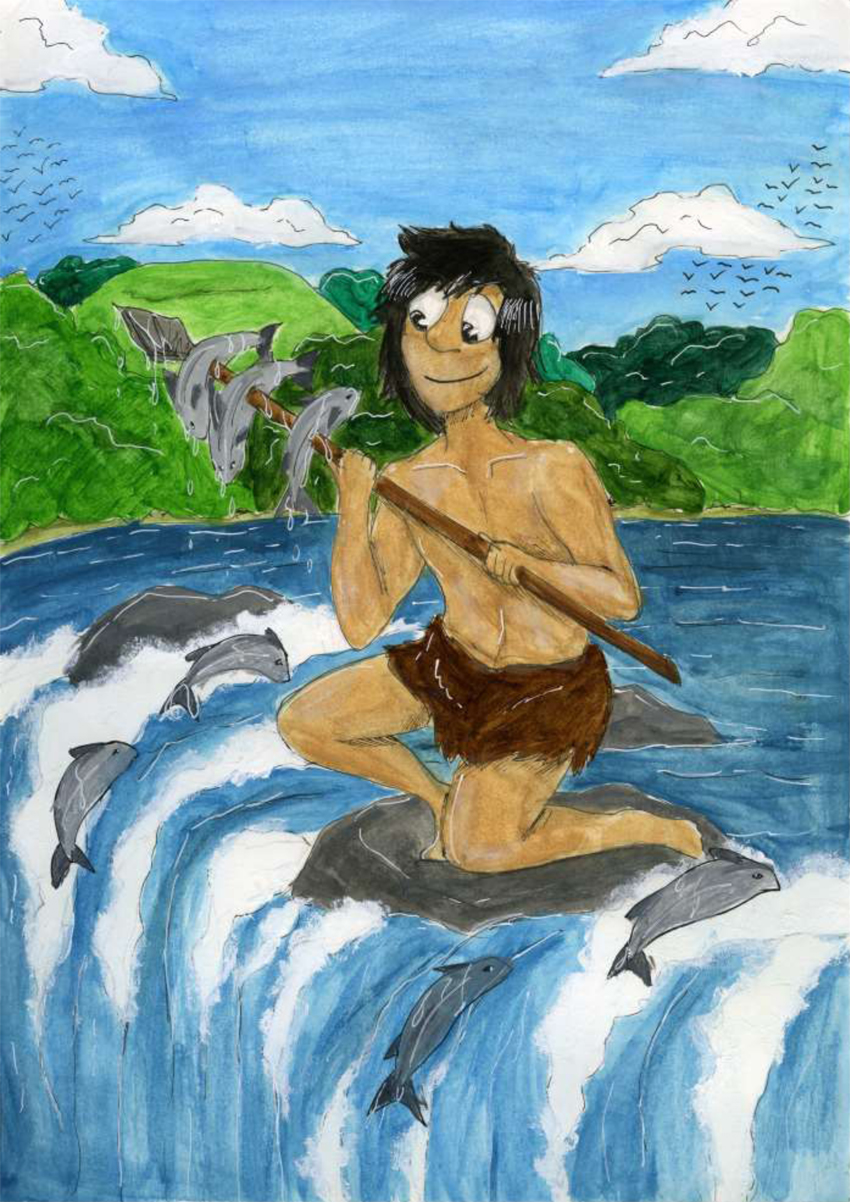
Discovering Mountsandel.
The Mountsandel Discovery and Heritage Group have produced an illustrated book, The Salmon People, inspired by what life may have been like at the Mountsandel Mesolithic site. They also produced exhibition for use at community events to raise awareness and understanding of this significant prehistoric site. As part of their project the group worked with students at Northern Regional College to produce a short promotional film.
Hardcopies of the Salmon People book are free and can be picked up at Ballymoney Museum, or by contacting Causeway Coast and Glens Borough Council Museum Services through this website.
A digital copy of the exhibition panels and The Salmon People may be downloaded here
To follow the progress of Mountsandel Discovery and Heritage Group’s project, click here
Glór, Dhún Geimhin
Glór, Dhún Geimhin.
Glór Dhún Geimhin developed a heritage trail in Dungiven, accompanied by a brochure giving details on the sites. As part of their project they also developed the script and media content for a future audio-visual presentation which will allow the stories of the sites on the heritage trail to be shared with a wider audience.
Hardcopies of Glór’s heritage trail brochure are free and can be picked up from Glór, Dhún Geimhin, from Ballymoney Museum, or by contacting Causeway Coast and Glens Borough Council Museum Services through this website.
Digital copies of the brochure may be downloaded here
To follow the progress of the Glór, Dhún Geimhin’s project, click here
Greetings from Cushendun
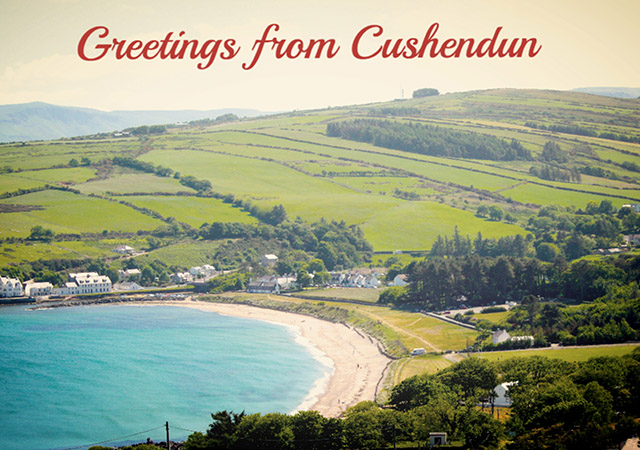
Greetings from Cushendun.
The Cushendun Buildings Preservation Trust investigated the history of Cushendun as a visitor destination from its first development as a bathing resort in the 19th century. Using postcards, photographs, hotel visitor books, and oral reminiscences, they painted a picture of local life and tourism in the village, which was shared through an exhibition and accompanying booklet.
Hardcopies of the Greetings from Cushendun booklet are free and can be picked up from Ballymoney Museum, or by contacting Causeway Coast and Glens Borough Council Museum Services through this website.
Digital copies of the Greetings from Cushendun exhibition and booklet may be downloaded here
To follow the progress of the Cushendun Buildings Preservation Trust’s project, click here
Hervey Heritage Trail
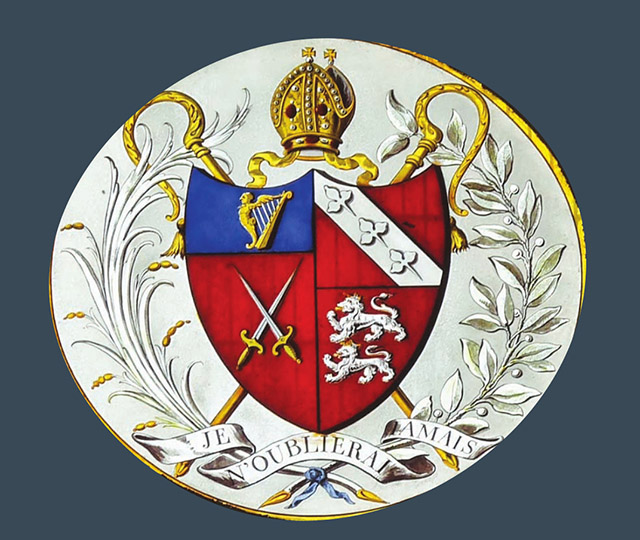
Hervey Heritage Trail.
Hervey Heritage Group produced a heritage trail and booklet identifying sites associated with the Earl Bishop Frederick Hervey. They also created two interpretive information panels which were installed at Tamlaghfinlagan Parish Church, Ballykelly, and St Aidan’s Church, Magilligan. Their research has provided an opportunity for people, locals and visitors alike, to learn about this colourful eighteenth century character.
Hardcopies of the Hervey Heritage Trail booklet are free and can be picked up from Visitor Information Centres across the Borough, or by contacting Causeway Coast and Glens Borough Council Museum Services through this website.
A digital copy of the Hervey Heritage Trail booklet and interpretive panels may be downloaded here
To follow the progress of the Hervey Heritage Group’s project, click here
Historic Kilrea
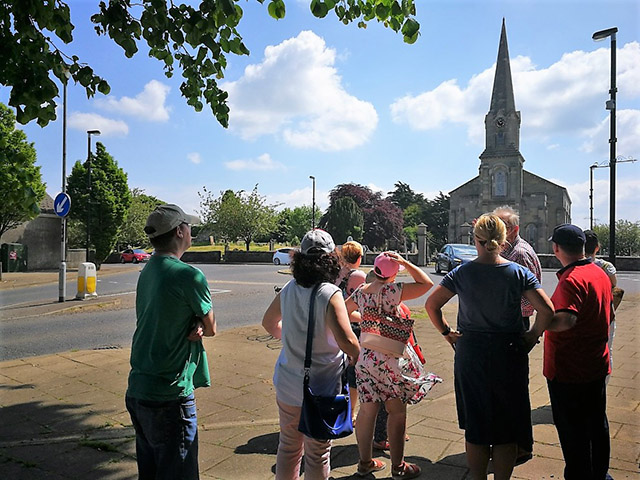
Historic Kilrea.
Kilrea Development Committee created a walking tour of Kilrea which includes the five local churches and other historic buildings, accompanied by a brochure giving details for each site. As part of their project they equipped group members with the necessary skills to guide visitors around the sites, and to assist with genealogical research. Their project will encourage visitors to come to Kilrea and to stay in the area longer, therefore bringing economic benefit to the town.
Hardcopies of the Historic Kilrea leaflet are free and can be picked up from Visitor Information Centres across the Borough, or by contacting Causeway Coast and Glens Borough Council Museum Services through this website.
A digital copy of the Historic Kilrea leaflet may be downloaded here
To follow the progress of Kilrea Development Committee’s project, click here
The History of Ballymoney RBL
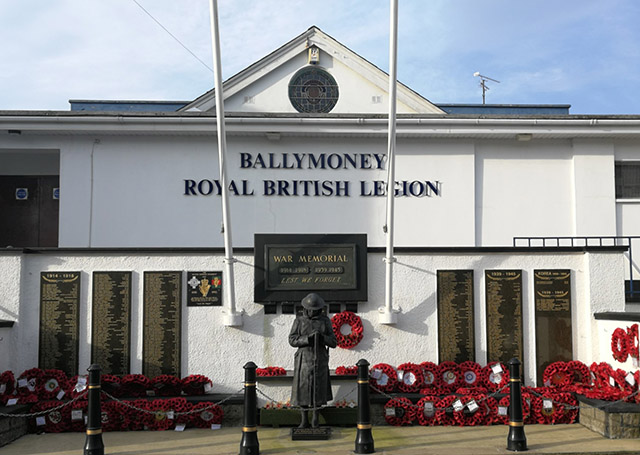
The History of Ballymoney RBL.
The Royal British Legion, Ballymoney, developed a history of their branch, since its formation in 1923, through the stories of its people and the site to produce a book. The project explores how the Royal British Legion has supported ex-Service personnel and their families locally and provides visitors and other readers with an insight into the history of that interaction and support. A presentation sharing the history of the branch was also developed for use with local schools and other community organisations.
Hardcopies of the book are free and can be picked up from the Royal British Legion, Ballymoney, from Ballymoney Museum, or by contacting Causeway Coast and Glens Borough Council Museum Services through this website.
A digital copy of the book may be downloaded here
To follow the progress of the Royal British Legion (The History of Ballymoney RBL) project, click here
The History of Dromboughil
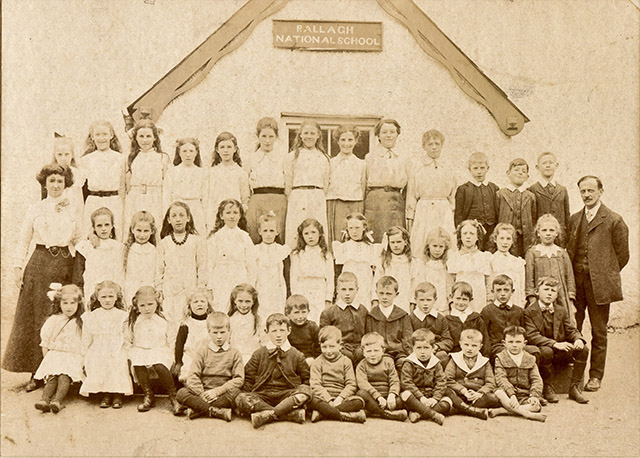
The History of Dromboughil.
Dromboughil Community Association explored the heritage of the local area by engaging with the local community to record oral stories – including memories from some of the local schools in the area which are now closed – and archive old photographs. They shared their work by producing a book to mark the 20th anniversary of the formation of the Community Association and holding a community event at which the photographs and local historical artefacts were displayed.
Hardcopies of Dromboughil’s book are free and can be picked up from Dromboughil Community Association, from Ballymoney Museum, or by contacting Causeway Coast and Glens Borough Council Museum Services through this website.
Digital copies of the book may be downloaded here
To follow the progress of the Dromboughil Community Association’s project, click here
Lore of the Land
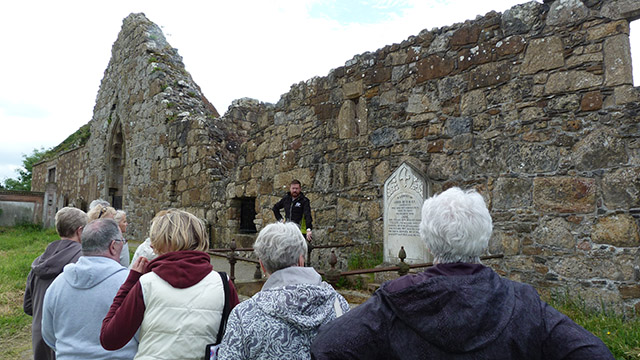
Lore of the Land.
The Lore of the Land regional project, in partnership with Clanmil Housing Association, engaged with older residents from four housing schemes (Abercorn Court and Mews, Cramsie Court, Glenshesk Court and Hezlet Court) to stimulate reminiscence and discussion of local folklore. Participants took part in loosely themed story-telling and reminiscence workshops, an art workshop, and folklore tours of sites across the borough: Bonamargy Friary and Dunluce Castle in Co. Antrim, and Slaghtaverty and Dungiven Priory in Co. Londonderry. The Stories explored through the workshops and tours formed the basis of a book exploring and sharing cultural heritage through the folklore of Causeway communities. Members of Carey Historical Society, the Hervey Heritage Group, and Rathlin Development and Community Association also contributed material to the Lore of the Land project.
Hardcopies of the Lore of the Land book are free and can be picked up from Ballymoney Museum, or by contacting Causeway Coast and Glens Borough Council Museum Services through this website.
A digital copy of Lore of the Land may be downloaded here
To follow the progress of the Lore of the Land project, click here
Our history – for keeps
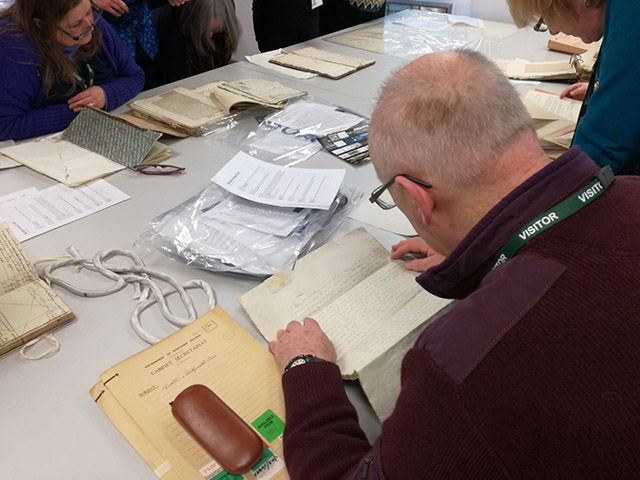
Our history – for keeps.
‘Our history – for keeps’ was a training programme developed by the Rathlin Development and Community Association. Open to all Rathlin residents, the aim of the project was to build capacity on Rathlin and leave a heritage skills legacy on the island. Including training programmes on oral histories, genealogy, the exploration of genetic ancestry through DNA, and an accredited tour guiding programme, the programme focused on the creation of archives, and how to keep them so the knowledge is available for future generations.
To follow the progress of the Rathlin Development and Community Association’s project, click here
For more information or to get involved with the ongoing work, please contact:
The Resource Centre
Rathlin Island
Co Antrim BT54 6RT
rdcaoffice@gmail.com
Place Names and Field Names of Culfeightrin
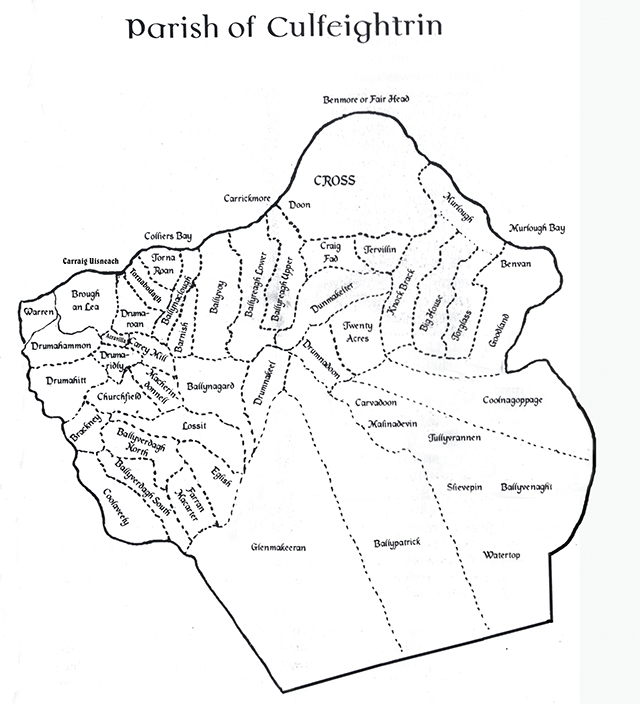
Place Names and Field Names of Culfeightrin.
Carey Historical Society developed a fieldnames project for the parish of Culfeightrin, near Ballycastle. The project was developed to build on earlier work under the Heart of the Glens Partnership Scheme, funded by Heritage Lottery Fund and managed by Causeway Coast and Glens Heritage Trust. By holding a series of mapping days and interviewing local people, along with extensive archival research, they produced a detailed volume recording and publishing the historic names of the area and their backgrounds. They also mapped the families who lived in the parish over the years.
Hardcopies of the Place Names and Field Names of Culfeightrin are free and can be picked up from Ballycastle Museum, Ballymoney Museum, or by contacting Causeway Coast and Glens Borough Council Museum Services through this website.
A digital copy of Place Names and Field Names of Culfeightrin may be downloaded here
To follow the progress of the Carey Historical Society’s project, click here
The Story of 1718
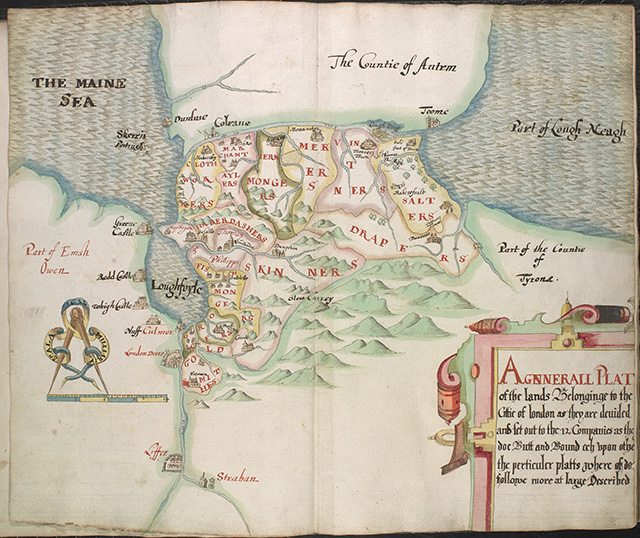
The Story of 1718.
Coleraine Ulster Scots Regeneration Group explored the story of the 1718 migration, principally of people from the Bann Valley, to northeast America. Be setting out to investigate who the migrants were, why they went, where they went and the contribution they made in the New World, they produced a heritage trail of sites connected to 1718. Working with two local primary schools, Ballyhackett and Bellarena, and the Media School of Ulster University Coleraine they also produced a school resource.
Hardcopies of the 1718 heritage trail and the 1718 school resource are free and can be picked up from Cuil Rathain Historical & Cultural Centre, Coleraine, Visitor Information Centres across the borough, and Ballymoney Museum, or by contacting Causeway Coast and Glens Borough Council Museum Services through this website.
Digital copies of both the 1718 heritage trail and the 1718 school resource may be downloaded here
To follow the progress of Coleraine Ulster Scots Regeneration Group’s project, click here
For more information or to get involved with the ongoing work, please contact:
The Scotti Rooms
Cuil Rathain Historical & Cultural Centre
31 Union Street
Coleraine
Co. Londonderry BT52 1QB
cuilrathainhcc@gmail.com
Unearth Dervock
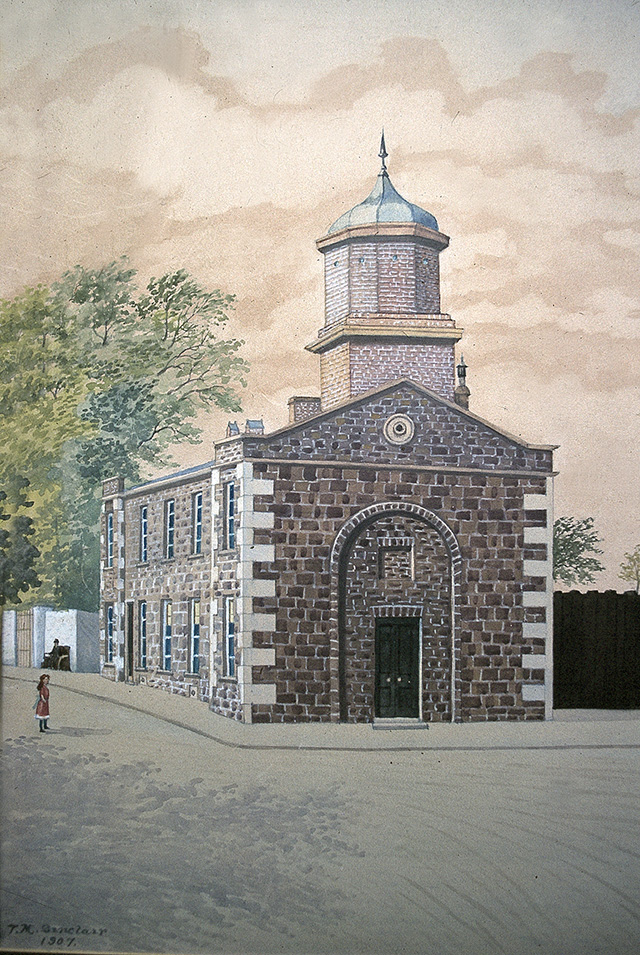
Unearth Dervock.
Dervock & District Community Association developed a heritage trail taking in key sites in the story of the village. They also produced a book detailing the townland names in the parish of Derrykeighan and collating family names connected with the area over the years. Their book, which brings names connected to the area from a variety of sources together will prove a useful tool for anyone connected to or interested in the parish.
Hardcopies of both the heritage trail and book are free and can be picked up from Visitor Information Centres across the borough, from Ballymoney Museum, or by contacting Causeway Coast and Glens Borough Council Museum Services through this website.
Digital copies of both the heritage trail and book may be downloaded here
To follow the progress of the Dervock and District Community Association’s project, click here
We Count Too!
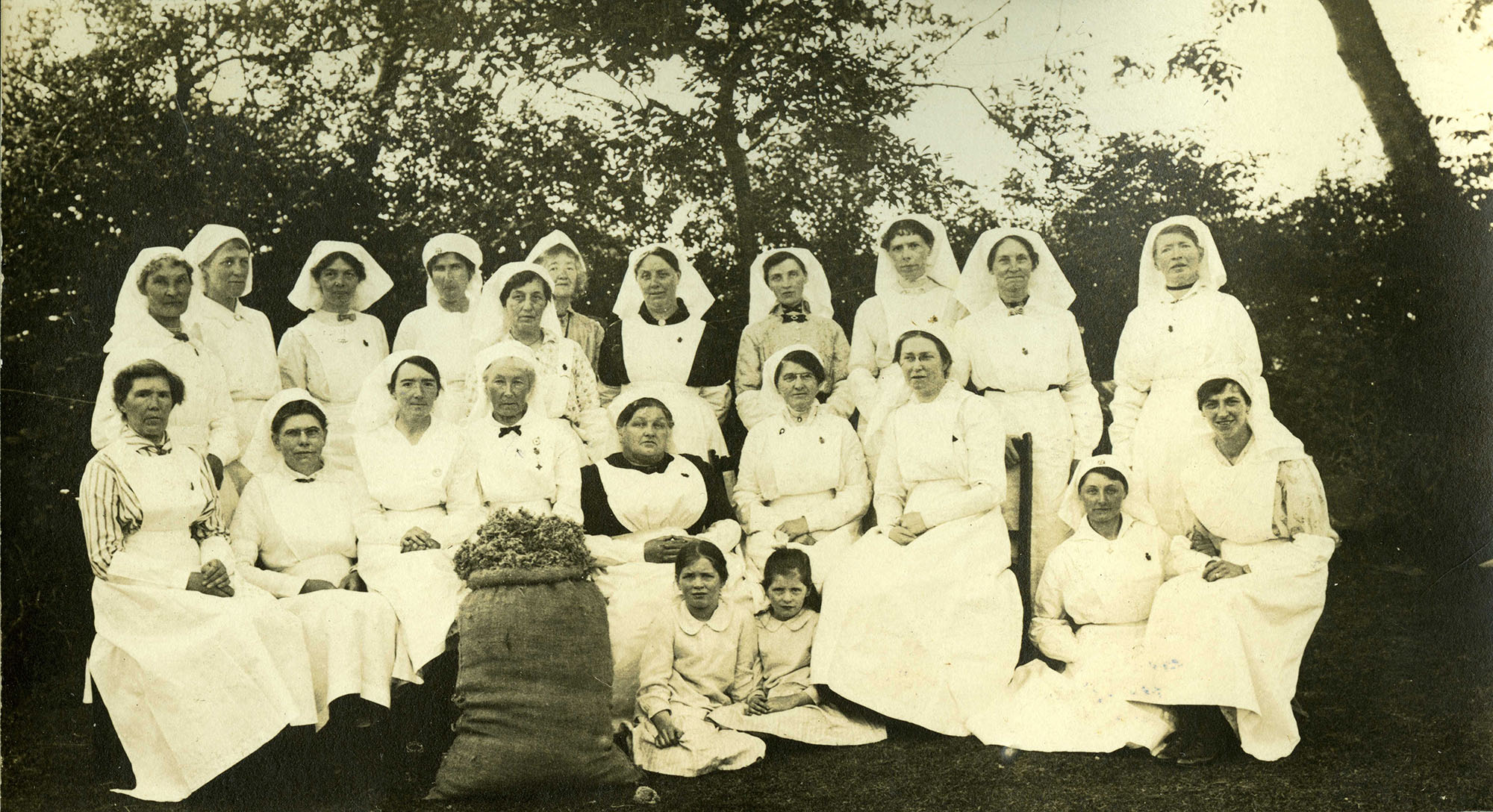
We Count Too!
Roe Valley Ancestral Researchers produced a book highlighting the often-overlooked contribution of women during World War One by sharing the contribution of some local women. Their book We Count Too! also gives an insight into some of the key influencers of the development of nursing. The group were keen to be able to provide a toolkit to support their own members and other groups undertaking research into World War One nurses.
Hardcopies of the book are free and can be picked up from Ballymoney Museum, or by contacting Causeway Coast and Glens Borough Council Museum Services through this website.
Digital copies of book may be downloaded here
To follow the progress of the Roe Valley Ancestral Researchers’s project, click here
Decade of Anniversaries Regional Project
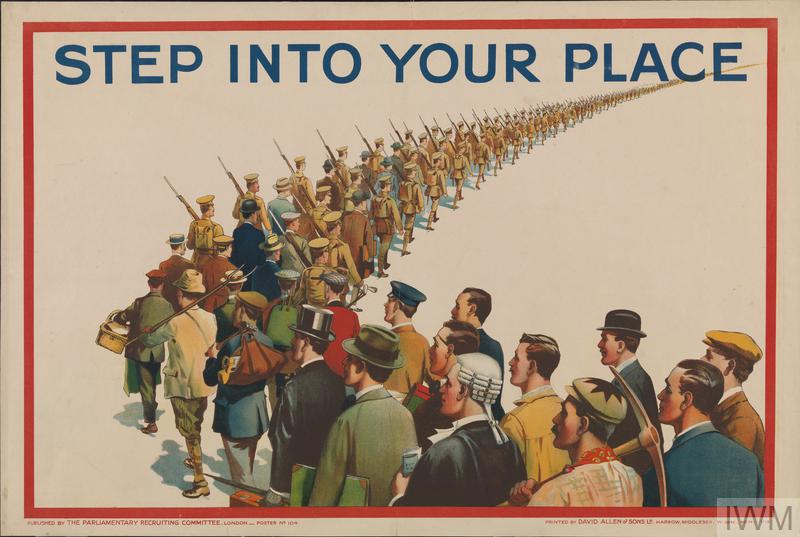
Decade of Anniversaries
The Decade of Anniversaries regional project built on the legacy of previous projects delivered by Causeway Museum Services including PEACE III On the Brink 1912-13, followed by the HLF funded On the Brink programme 1914 – 1916, delivered in partnership with Mid Antrim Museums Service.
During the PEACE IV Understanding Our Area programme 2017 – 2020 a number of elements were delivered to support understanding of local connections with key and, at times, contentious events that occurred 100 years ago.
The 1918: Local Voices exhibition in Ballymoney, Coleraine and Limavady. 1918 resources and exhibition panels can be found here
Performances of Meeke & the Major, a play telling the WWI story of Private John Meeke and Major Willie Redmond, in Portstewart and Cushendall allowing people to reflect on this period of shared history, encouraging and developing mutual understanding.
The book, The Search for Molly: An Irishwoman in the Great War, tells the story of Molly McGinnis, a St John Ambulance nurse from Legahoire, near Ballykelly who was awarded the Military Medal. Copies of the book are available through Museum Services or in digital format here
A visit to The Troubles and Beyond exhibition in the Ulster Museum allowed participants to view works produced by local people as part of Stitching and Unstitching the Troubles under the Peace III Cultural Fusions project in 2011-2013.
The 75th Anniversary of Victory in Europe Day digital exhibition considered local events as the news of peace was celebrated across the Causeway area. The exhibition content is available here
The Partition in Ireland/Partition of Ulster exhibition and booklet explores local events and local connections to pivotal events that led to the formation of Northern Ireland and the Republic of Ireland. All content is available online here and the planned touring programme will be rescheduled for 2021.
Dancehalls Regional Project
Dancehalls
An opportunity arose, through access to a substantial private collection and discussion within the Community Planning Subgroup for Arts and Culture, to develop an intergenerational and cross-community programme for the history of Dance Halls in the Causeway area. An initial research project into the collection was completed by Museum Services and a subsequent three phase community engagement programme commenced in late 2019, engaging a further six groups as well as existing groups. The impact of COVID-19 lockdown resulted in the cancelling of the final phase of the community engagement programme.
The dancehalls exhibition seeks to remember these once popular establishments through he Bobby Platt Collection. Bobby organised showband performances during the 1950s and 60s at venues in Coleraine, Portstewart and Limavady. Photographs from the Chronicle and Constitution Archive feature along with local memories of the dancehalls which have been recorded. The exhibition content is available here and the planned touring exhibition will be rescheduled for 2021.
Community Heritage Audit
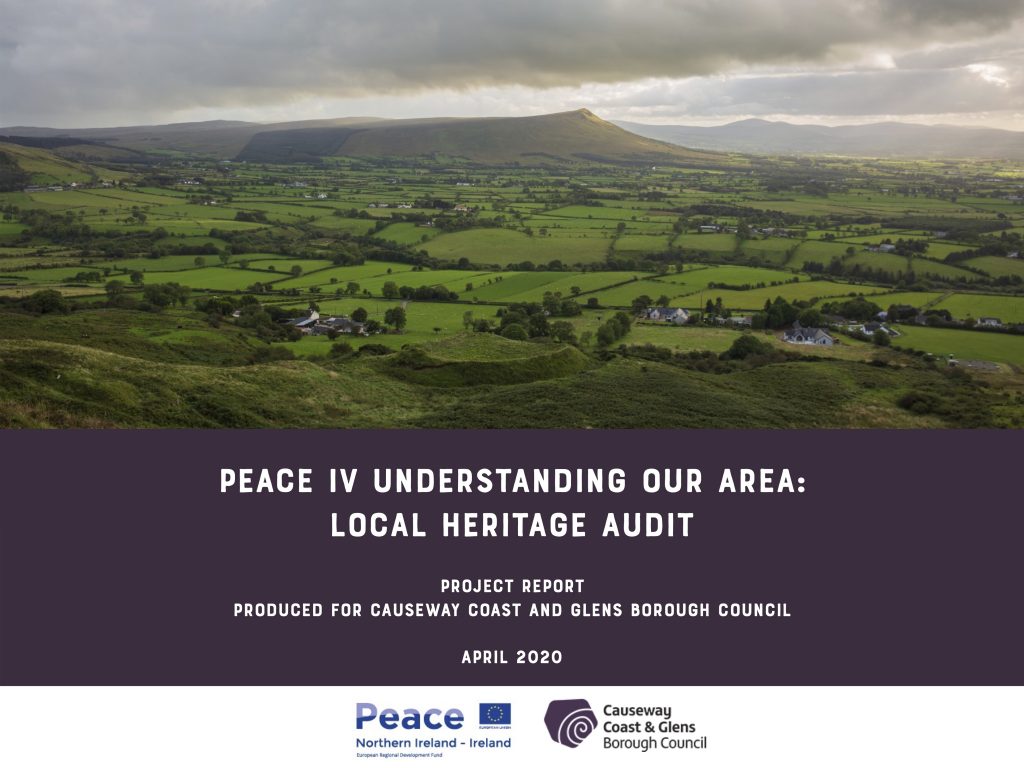
Community Heritage Audit.
Many of our community groups, including those not participating in the PEACE IV programme, have developed heritage trails, heritage centres and trained up local people as visitor guides. Groups and local public authorities have also produced a number of publications that are only available locally and not widely publicised. In order to create a single list of these resources, Museum Services commissioned Abarta Heritage to conduct a community heritage audit which included a detailed report and interactive online map.
A digital copy of the community heritage audit may be downloaded here
Further details about the mapping project, and access to the interactive map, can be found here
Community Forums and Regional Training Programmes

Community Forums and Regional Training Programmes.
Alongside the individual group projects, the Understanding Our Area programme encouraged inter-group collaboration and networking through periodic community forums and other regional training programmes. The forums allowed opportunities for groups to build new relationships, engage in peer learning and support, and share resources.

Regional Training Programmes.
The regional training programme was delivered outside of the group projects and was therefore open to any participant in the Understanding Our Area programme. The programme provided different aspects of training designed increase the individual capacity of the participants. Training included:
- Copyright principles
- Principles of design
- Oral history basics
- Oral history recording
- Outline of museum resources
- NI Community Archive training
- Object handling and conservation basics
- DNA and genetic ancestry workshops
- Genealogy training
- Visits to the Public Records Office of Northern Ireland (PRONI)
- Heritage craft training
Tour guide training was part of the project plan for two groups - Kilrea Development Committee and Rathlin Development & Community Association. Further training was made available to members of all other groups participating in Understanding Our Area programme and delivered between Coleraine and Dungiven.
Participants undertook an accredited OCN NI Level 2 Award in Tour Guiding, delivered by Travel & Tourism Associates. All participants rated the course highly in all areas covered – General Tourism Overview; Presenting a Commentary; Practical/Leading a Group; H&S on Tours; Practical delivery & Feedback.
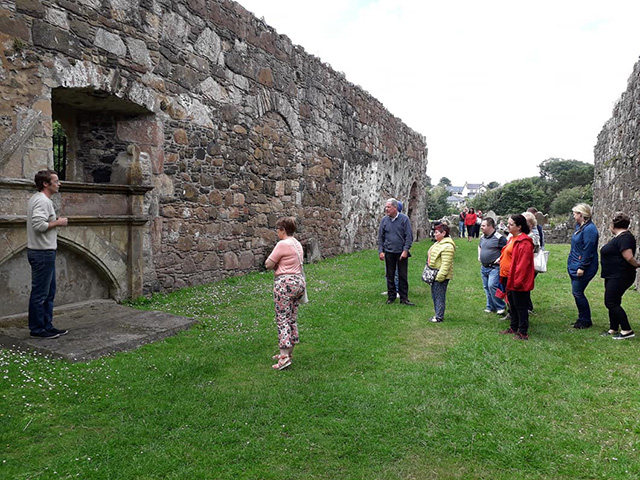
Bonamargy.
In addition, representatives from Hervey Heritage Group, Mountsandel Discovery and Heritage Group, Carey Historical Society, Kilrea Development Committee, Portrush Heritage Group and Dromboughil Community Association shared their own knowledge with Glenshane Care Association’s Accessible Heritage programme, while individuals from Carey Historical Society, the Hervey Heritage Group, and Rathlin Development and Community Association contributed material to Clanmil’s regional Lore of the Land project.
Programme Summary and Evaluation

Evaluation
Glenshane Care Association and Mountsandel Discovery and Heritage Group took part in a mid-project impact evaluation commissioned by SEUPB. Consultation was undertaken with group representatives and it was concluded that the Understanding Our Area programme was having a positive impact on peace and reconciliation in Causeway Coast and Glens area by enabling communities to engage and interact on a cross community basis with local history, heritage and culture.
End of programme evaluation sessions captured a wide range of feedback from participating groups and from Peace IV and Museum Services staff. The final programme summary and evaluation booklet may be found here


